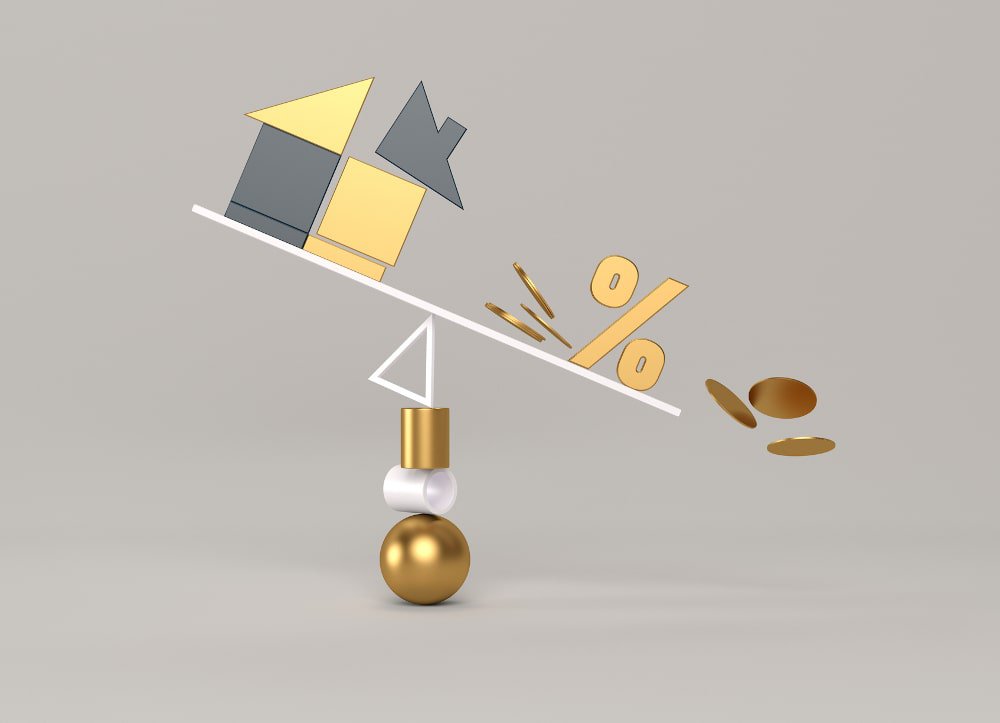What is Considered a High-Risk Mortgage?

High-risk mortgages come with higher interest rates and stricter terms due to a borrower’s financial history. Understanding how to avoid these mortgages can help you secure better rates and terms.
Key Takeaways
- High-Risk Mortgage: Granted when borrowers have bad credit or a high debt-to-income ratio, leading to higher interest rates and larger down payments.
- Implications: High-risk mortgages mean higher costs due to increased interest rates and stricter payment terms.
- Avoiding High Risk: Improving credit scores, paying down existing debts, and saving for a larger down payment can reduce the perceived risk to lenders.
- Next Steps: Regularly check your credit report, correct errors, and calculate your debt-to-income ratio to assess mortgage eligibility.
When you take a mortgage or any other loan, the lender will assess the risk of lending you money. Factors like your credit score and debt-to-income ratio will determine whether they accept your application and the interest rates they’re willing to charge you. This risk-based pricing helps lenders address disparities in individuals’ financial histories.
When lenders deem you high-risk, they are likely to approve you for a high-risk mortgage. This might have several implications for both you and your lender.
What Is A High-Risk Mortgage?
A high-risk mortgage is a mortgage that lenders deem to be high-risk due to the borrower’s financial history. So, “high-risk” is defined by the borrowing qualifications the borrower has, with credit score being one of the most significant factors. If the mortgage terms don’t align with the borrower’s qualifications , it is a high-risk mortgage. Several factors contribute to lenders deeming a borrower high-risk.
Bad Credit
Bad credit is defined by a low credit score . If you have a history of missing credit payments or paying back too late, your credit score will drop.
Lenders view borrowers with bad credit as high-risk. From their point of view, if you’ve consistently failed to make timely repayments to other debtors, what would make you more likely to pay them back on time? So, if you have bad credit, lenders will be likely to approve you for a high-risk mortgage.
In Canada, the “poor” and “very poor” credit range falls between 300 and 600, but exact ranges vary depending on the specific credit bureau reporting your score. If you have a credit score falling into these ranges, you will normally only qualify for high-risk mortgages. If you have below-average credit, you may not be considered high-risk, but the other risk factors will be taken into consideration.
Too Much Debt
Existing debt is one of the most significant factors for lenders reviewing a mortgage application. What defines “too much debt” is a high debt-to-income ratio . Your debt-to-income ratio is your current total debt as a percentage of your annual income . For example, if you make $50,000 per year and have $10,000 in debt, your debt-to-income ratio is 20%.
In Canada, a “good” debt-to-income ratio is 36% or less. Canadian consumers are among the most indebted in the world, but once your ratio passes the 43% mark, lenders will see your debt as a cause for concern.
Unlike your credit score, your debt-to-income ratio can change rapidly. Taking on a large new loan will shoot your ratio higher while paying off a loan quickly will see your ratio plummet. If you’re considering applying for a mortgage, shedding off some of your existing debt can help the lender view lending you money as less risky.
How Does This Affect Me?
If a mortgage lender approves you for a loan that is outside their normally accepted risk portfolio, there will normally be several implications for you.
A Risky Investment
Lenders see the loans they provide as investments. A high-risk mortgage is essentially an investment that is less likely to produce good returns. So, lenders will want to be compensated for the risk they are taking on by lending you money.
Higher Interest Rates
Because interest is what produces the return on investment for a lender, you can expect to pay them more through higher interest rates. The rates they offer you will be higher than normal to make up for the disparity in risk.
Higher interest rates have both short-term and long-term implications for you. You will have to pay a much higher interest rate from the beginning of the loan. Normal fixed-rate mortgage repayments primarily go to paying off interest first. But the result is more money paid to the lender throughout the entire course of the mortgage.
Higher Down Payment
Mortgages are a long-term investment for a lender. If the lender sees the investment as high-risk, they will want to ensure they collect more of their money sooner. One way they do this is by collecting more upfront in the form of a much higher down payment. Normal down payments are between 10% and 20% of the mortgage, while borrowers with excellent credit can qualify for even better rates. Bad credit mortgage down payments are always on the higher side.
You can find exceptions to these rules, but in the end, you must have something to offer to make your lender more at ease. For example, if you have bad credit but already own a home, you can tap into your equity and borrow against it.
What is a high-risk mortgage?
A high-risk mortgage is a loan given to borrowers with poor credit scores or high debt-to-income ratios. These mortgages typically have higher interest rates and larger down payment requirements to offset the lender's risk.
How To Avoid High-Risk Mortgages
The simple answer is to improve the borrowing qualifications that we’ve gone over. But factors like credit score don’t improve vastly overnight.
Whether it’s your credit score or one of the other factors, there are normally a number of reasons why you can only qualify for a high-risk mortgage. Even if most of your qualifications are fine, a single event, such as defaulting on another loan, can launch you into the high-risk category.
On the other end of the spectrum, paying down large debts can quickly improve your borrower qualifications. Let’s look at how these solutions can be applied to improve your chances of qualifying for a better mortgage.
Improve Your Credit Score
Your credit score is the culmination of all the financial events listed on your credit reports. You can get a free credit report from a credit reporting bureau to get a more complete picture of your financial history.
Removing Mistakes
Credit reporting bureaus sometimes make mistakes that harm peoples’ credit scores. This is why checking your credit score regularly is so important, even if your credit score is fine. A mistake that leads to even a slight drop in your score can make a big difference when you’re applying for a mortgage.
When you order your free credit report, check for errors in your credit card and other loan accounts. A common error is a payment you made on time being reported as late. Another example is a negative item on your report remaining on your credit report beyond the maximum time it can remain there.
More importantly, you may find an item on your credit report that you never authorized in the first place. This is often a result of identity theft, which you should report to the credit bureau and the Canadian Anti-fraud Centre . A wrongfully low credit score can be another symptom of being the victim of identity theft.
If you want to challenge an item on your credit report which is not fraud, you will likely need to do some more homework. First, you need to support your case with documents such as receipts and bank/credit card statements. You need to prove your claim.
Once you have the evidence you need, you can fill out the credit bureau’s forms for error correction.
Fill an Equifax dispute here
Fill a TransUnion dispute here
The credit bureau will need some time to review your case. But you can often expedite the process by contacting the creditor relevant to the error you’re reporting.
Save More For A Down Payment
If you know you are likely to be viewed as a high-risk borrower, it pays to be ready for a higher down payment, at least just in case. Even in the worst cases, this can lower your loan-to-value ratio (LTV), which may make your lender view you as a less risky borrower. Less risk normally translates to lower mortgage interest rates .
Settle Existing Debts
As discussed, this is one of the faster ways to reduce the risk that lenders associate you with. If you can save some money and pay down your debts, your debt-to-income ratio will drop. Sometimes, reducing your ratio by just a few percentage points can make the difference and qualify you for a better mortgage . Also, doing so strategically can improve your credit score over time.
Are You Eligible For A Lower-Risk Mortgage?
The best way to start is to find out if you even need to worry about high-risk mortgages. If you suspect you may be in trouble, go get a free credit report right now! While you’re at it, you can calculate your debt-to-income ratio as well. All you need to do is divide your total debt by your annual income.
Get started now so you can know what steps you need to take (if any) to qualify for a good mortgage.





